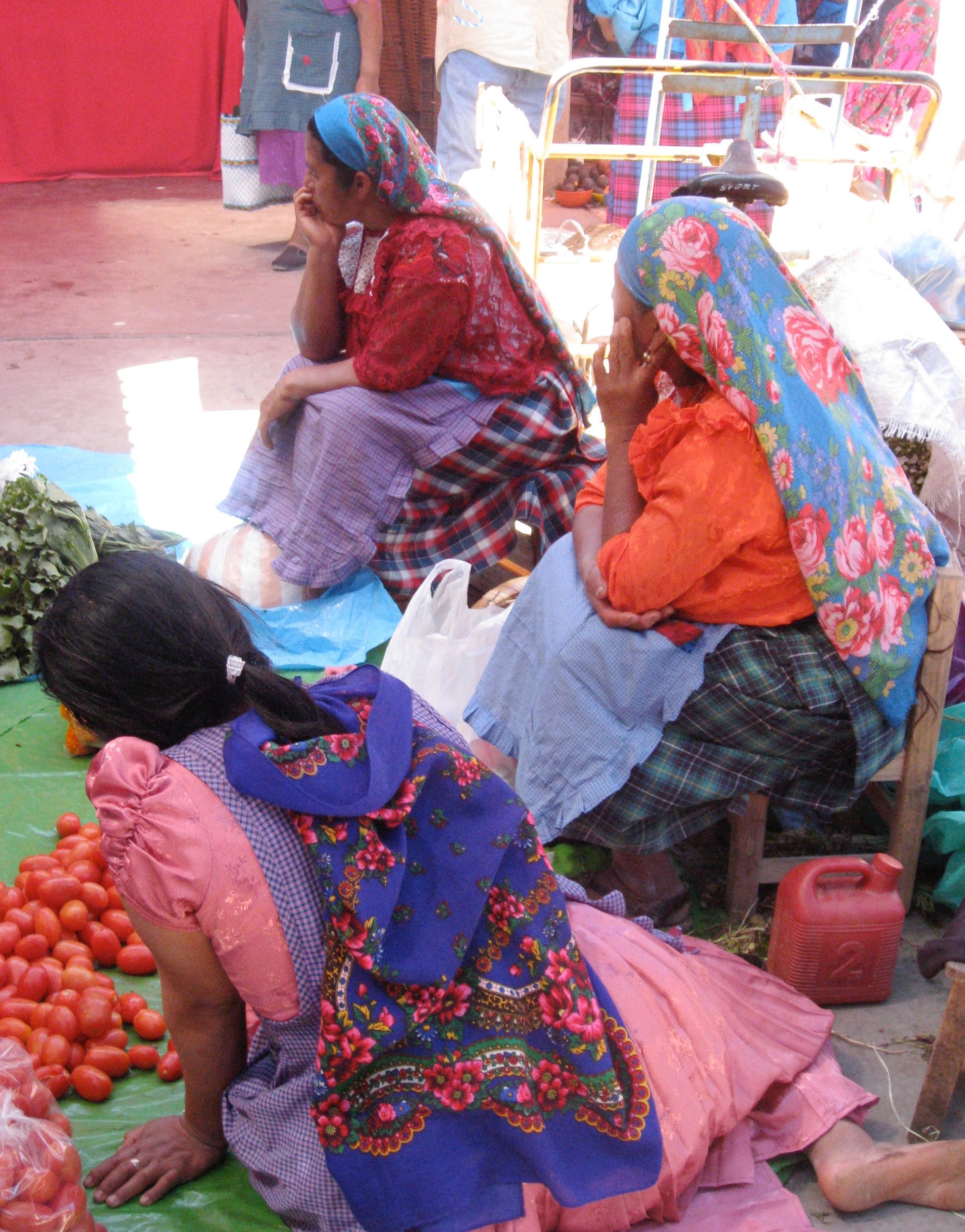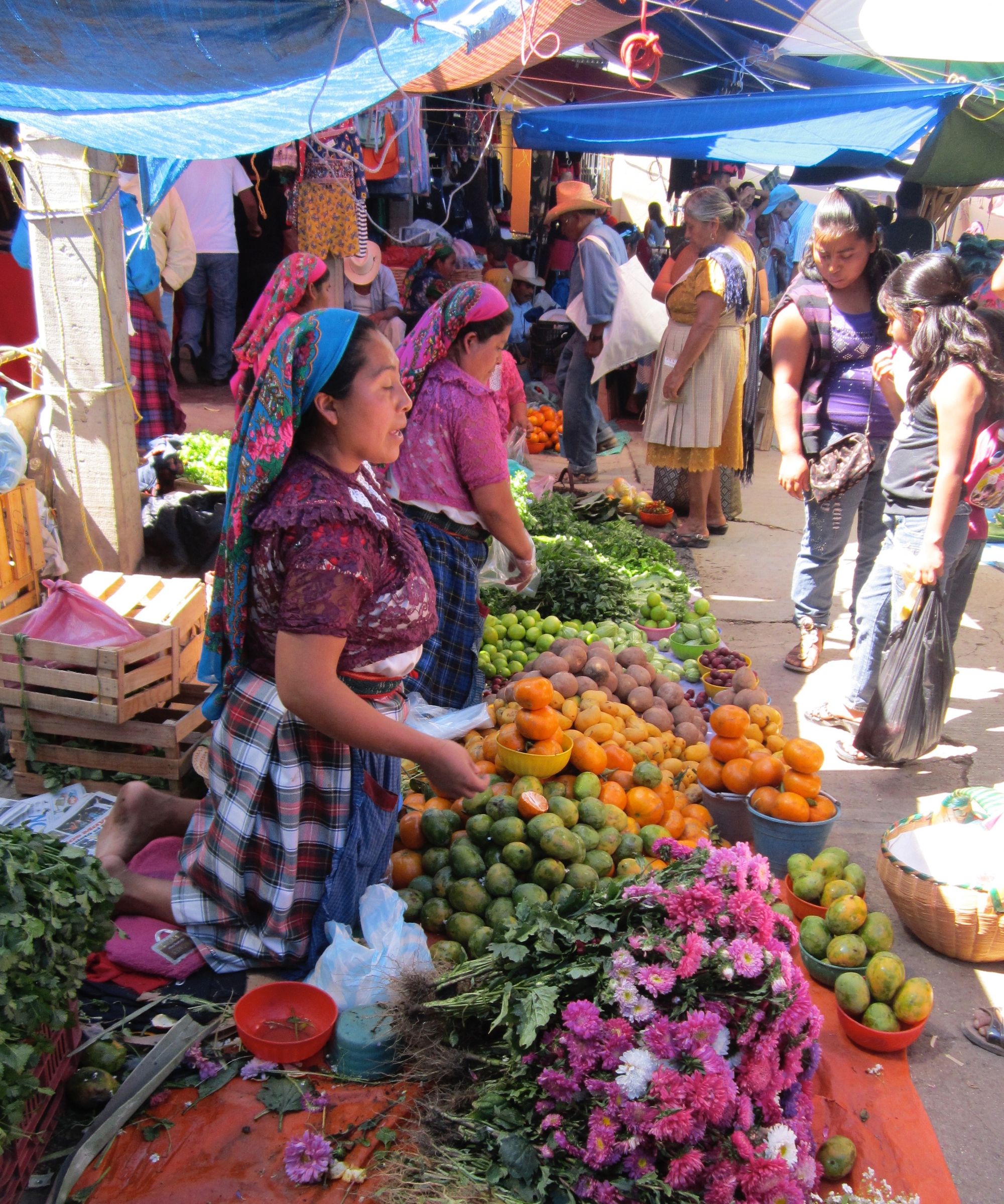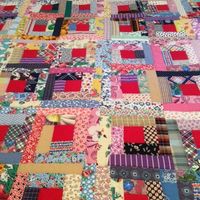Here's a Oaxacan clothing issue I've been pondering.
Why do some women at the Tlacolula market wear headscarves that look like they were borrowed from a Ukranian grandmother, or a gypsy cousin?
Their babushkas just do not look Mexican. I've never seen these bright, flowered swaths of fabric worn in other village markets or in the streets of the capital city.
So where did they come from?

I turned to Google with this burning question.
Well, it seems these women are all from the remote village of San Bartolomé Quialana and they travel weekly to sell their produce at the Sunday market in Tlacolula, which is where I saw them.
Large numbers of their men regularly migrated north over the years to work in the States, and started bringing these pretty synthetic scarves home as gifts. They were colourful, didn't wrinkle or stain like fabric made from natural fibers, and the women loved them. The fashion caught on, and soon became a hallmark of their village.
Young women have another reason to enjoy these industrially manufactured scarves. The former traditional woven shawls clearly designated married and single women, which caused a difficult situation for unmarried mothers. The style of these new neutral scarves was a feminist achievement, and a change that girls in other communities have envied.
The scarves are a sign of changing times, and it seems plaid skirts, pleated skirts and lacy bolero tops are also a trend. Style is a mystery and changing fashion is interesting, even in rural southern Mexico.

There may be more to the flowered babushka story, but that's all I know for now. An interview at the source may be in order if I find a willing vendor to chat with on my next visit to the Tlacolula market.
These photos were taken about ten years ago. I hope to visit the famous Sunday market again and investigate the scarf issue a little further.
I'll keep you posted.

